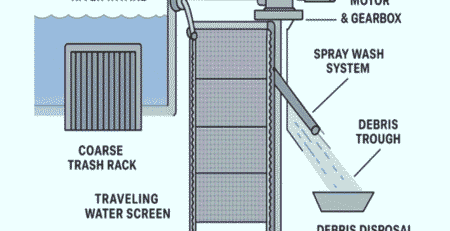Importance of Reverse Osmosis Plants in the Cambodia Market
Reverse Osmosis plants are an important technology in wastewater treatment. They are designed to remove unwanted substances such as nitrates, chlorides, and phosphates from the water. They are used in hospitals, residential buildings, and in industrial settings to filter water. They are also applied in military situations to protect lives.
What is the Importance of Membranes in Reverse Osmosis Plants?
In reverse osmosis, the process of separation involves the pressure applied to a concentrated solution, which then passes through a semi-permeable membrane. It is commonly used for water softening and to treat surface and brackish water. The system also serves as an excellent method for desalination.
Several types of membranes are used in reverse osmosis plants. These can be single membranes, multi-membrane systems, or even robotised systems.
Generally, membranes for reverse osmosis plants are made of either hollow fiber or plastic. Hollow fiber modules are more susceptible to fouling. On the other hand, plastic modules are more durable.
In conventional reverse osmosis plants, the feed-water is pretreated with chemical additives. This step increases the cost of the equipment and can impact on the working of the semi-permeable membranes.
In addition to chemicals, salt rejection has been a main performance parameter in RO. Since salt is present in seawater, it is important to control salt rejection. The rejection can be improved by cleaning the membrane.
For a RO plant, it is not uncommon to have to perform frequent cleaning. This maintenance can negatively impact the productivity of the plant.
During cleaning, it is important to remove all biological and organic fouling. A variety of tests can be performed to differentiate between biological and organic fouling. Some of these tests include bacterial cell counts, total organic carbon, heterotrophic plate counts, and proteins.
When the membrane is clean, the normalized salt rejection of the RO plant can decrease by up to 0.7%. This may be due to the aging of the membrane or the use of CIPs.
If the feed-water flow is steady, the membrane efficiency will improve. However, if the flow rate is low, the rejection will be reduced, which could mean the need for membrane replacement.
What is the Working of Reverse Osmosis Plants?
Reverse osmosis plants filter water to create purified drinking water in Cambodia. They are also used for industrial or municipal applications of Cambodian Market. This process is often referred to as “toilet to tap”.
A reverse osmosis system is a multistage water treatment process that is used to remove particles, bacteria, and salts from water. These systems are typically made up of three or five filters. They can also have ultraviolet light and ozone added to the system.
The membrane used in a reverse osmosis plant is a spiral-wound sheet of semipermeable material. The membrane pore size can vary between 0.1 and 5,000 nm. The surface area of the membrane can range from 350 to 450 square feet.
Reverse osmosis plants filter liquid by applying pressure that exceeds the osmotic pressure. This forces the lower concentration solution to migrate to the higher concentration solution. The reverse osmosis system is effective at removing contaminants that have a molecular weight of 18 or less.
For the water to reach the highest concentration, the reverse osmosis plant forces it through a semipermeable membrane. Then, it can move back to a lower concentration.
Reverse osmosis membranes are available in a variety of sizes, in Cambodia market. The diameter of the membrane can be a factor in determining the amount of dissolved salts it can filter. The larger the diameter of the membrane, the more solids the liquid can contain.
The majority of reverse osmosis membranes use thin film composite materials. This type of membrane is prone to degradation when oxidized by chlorine or biocides.
Wastewater Treatment Market of Cambodia
The Southeast Asian water and wastewater treatment market is at an exciting stage of development. Growth opportunities are expected for the medium to long term.
With rapid economic growth, Cambodia is moving toward meeting the UN Sustainable Development Goals. A major challenge is to improve the country’s water and sanitation systems. This includes wastewater and climate resilience.
Waterman Engineers Australia can offer water treatment plants in Cambodia to address the water crisis. We can bring a range of technologies to the country’s water projects.
We hope to provide clean and safe drinking water to the people of Cambodia. In addition, and solve the water crisis by 2030.
The Cambodian Water Authority (CWA) is a leading organization in the nation’s rural water supply. It has a deep knowledge of the country’s environment and population. It operates in 65% of all Cambodian water projects.
Regional outlook of Cambodia Reverse Osmosis Plants Market
Water is a basic need for human life and in Cambodia it is a huge problem. It is estimated that nearly two billion people worldwide do not have access to clean drinking water. In order to meet these needs, the country’s water supply and sanitation (WSS) sector is in need of innovative technologies. Fortunately, the market is already poised to grow.
Waterman Engineers Australia, the world’s leading manufacturer of reverse osmosis technology, hopes to collaborate with like-minded groups to help address the country’s growing water crisis.
Our company’s primary goal is to help end the worldwide water crisis. We are committed to providing sustainable water solutions that will allow the country to become middle-income by the year 2030.
The Bottom Line
Cambodia’s economy is enjoying a rapid growth. The country is also making progress towards meeting the United Nations Sustainable Development Goals. It has a huge water resource that are being utilized for agriculture, hydropower, and tourism. However, the country is still working on ensuring adequate climate resilience.
Reverse osmosis processes are used for a wide variety of applications in Cambodia, including food and beverage processing, waste water treatment, and boiler water treatment. Reverse osmosis systems are capable of removing 99%+ of dissolved salts.













